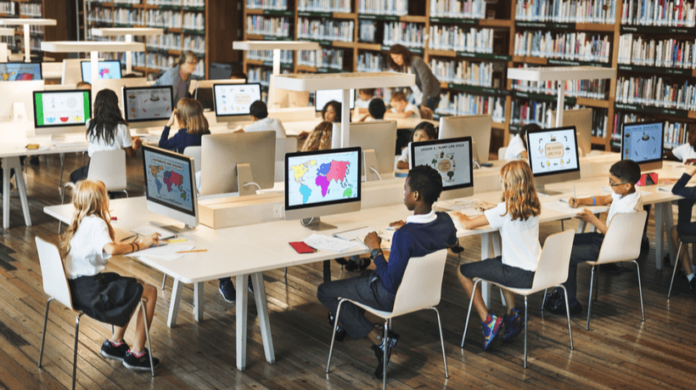Introduction
In today’s rapidly evolving world, technology has become an integral part of our daily lives, including the field of education. The integration of technology in modern education has revolutionized the way students learn and teachers teach. From interactive digital resources to online collaboration tools, technology has enhanced learning experiences and opened up new possibilities for education. In this article, we will explore the role of technology in modern education and how it is transforming the educational landscape.
Advantages of Technology in Education
The integration of technology in education brings numerous advantages that enhance the learning experience for both students and teachers. Let’s explore some of these key advantages:
1. Access to Information and Resources
Technology provides students with instant access to a vast amount of information and educational resources. Through the internet, students can explore various subjects, conduct research, and access up-to-date information from around the world. Online libraries, educational websites, and digital databases enable students to broaden their knowledge and deepen their understanding of different topics.

2. Engaging and Interactive Learning
Technology offers interactive and multimedia-rich learning experiences that capture students’ attention and make learning more engaging. Digital tools, such as educational apps, simulations, and multimedia presentations, provide interactive elements that stimulate student participation and active learning. This hands-on approach promotes better comprehension and retention of information.
3. Personalized Learning Opportunities
Technology allows for personalized learning experiences tailored to individual students’ needs and learning styles. Adaptive learning platforms and intelligent tutoring systems analyze students’ progress and adapt the content and pace of instruction accordingly. This personalized approach ensures that students receive targeted support and can learn at their own pace, fostering a more effective and inclusive learning environment.
4. Collaboration and Communication
Technology facilitates collaboration and communication among students and teachers, breaking down geographical barriers. Online platforms, discussion forums, and video conferencing tools enable students to collaborate on projects, share ideas, and engage in virtual discussions. This promotes teamwork, critical thinking, and effective communication skills, preparing students for the collaborative nature of the modern workforce.
5. Enhancing Teaching Methods
Technology empowers teachers with innovative tools and resources to enhance their teaching methods. Interactive whiteboards, multimedia presentations, and educational software enable teachers to create dynamic and visually appealing lessons that cater to different learning styles. Additionally, learning management systems streamline administrative tasks, such as grading and assignment distribution, allowing teachers to focus more on instruction and individualized support.
6. Developing Digital Literacy Skills
In the digital age, digital literacy skills are essential for students’ success. Technology integration in education equips students with the necessary skills to navigate digital platforms, evaluate online information critically, and use technology responsibly. These digital literacy skills are transferable to various aspects of their personal and professional lives.
7. Overcoming Geographic Barriers
Technology in education overcomes geographic barriers by providing access to education in remote or underserved areas. Online learning platforms andvirtual classrooms enable students to participate in educational programs without the limitations of physical distance. This opens up educational opportunities for students who may not have access to quality education due to their location.
8. Bridging the Digital Divide
While the digital divide remains a challenge, technology in education plays a crucial role in bridging the gap. Efforts to provide access to devices, internet connectivity, and digital resources to underserved communities help ensure equal opportunities for all students. By narrowing the digital divide, technology enables students from diverse backgrounds to engage in the digital learning environment and reap its benefits.
9. Addressing Diverse Learning Needs
Every student has unique learning needs, and technology can help address these diverse needs. With the aid of assistive technologies, students with disabilities can access educational content and participate in learning activities more independently. Technology also provides differentiated instruction, allowing teachers to adapt materials and teaching methods to accommodate various learning styles and abilities.
Challenges and Considerations
While technology offers immense potential in education, there are challenges and considerations that need to be addressed:
1. Ensuring Privacy and Security
The use of technology in education necessitates the protection of students’ privacy and data security. Schools and educational institutions must implement robust privacy measures, secure online platforms, and educate students about responsible digital citizenship to safeguard their personal information and ensure a safe learning environment.
2. Teacher Training and Professional Development
Effective integration of technology in education requires adequate training and professional development for teachers. Educators need support and resources to develop their digital literacy skills, explore innovative teaching methods, and effectively incorporate technology into their classrooms. Ongoing training programs and collaboration among educators can foster a tech-savvy teaching community.
Conclusion
Technology has transformed modern education, offering a range of advantages that enhance learning experiences for students. From providing access to information and resources to enabling personalized learning and fostering collaboration, technology plays a pivotal role in preparing students for the digital age. However, it is crucial to address challenges related to privacy, security, and teacher training to ensure the responsible and effective integration of technology in education. By harnessing the potential of technology, we can create dynamic, inclusive, and engaging learning environments that empower students to thrive in the 21st century.
FAQs
1. How does technology enhance learning experiences in education?
Technology enhances learning experiences by providing access to information, facilitating interactive and personalized learning, promoting collaboration and communication, enhancing teaching methods, and developing digital literacy skills.
2. What is personalized learning?
Personalized learning refers to tailoring educational experiences to meet the specific needs, interests, and learning styles of individual students. Technology enables personalized learning by adapting content and instruction based on students’ progress and preferences.
3. How does technology address the digital divide in education?
Technology helps bridge the digital divide by providing access to educational resources, devices, and connectivity to underserved communities. Efforts to ensure equal access to technology enable students from diverse backgrounds to engage in digital learning.
4. What are the challenges in integrating technology in education?
Challenges include ensuring privacy and security, providing adequate teacher training and professional development, addressing the digital divide, and adapting to rapidly evolving technological advancements.
5. How can technology support students with diverse learning needs?
Technology can support students with diverse learning needs through assistive technologies, differentiated instruction, and adaptive learning platforms that cater to individual learning styles, abilities, and disabilities.


